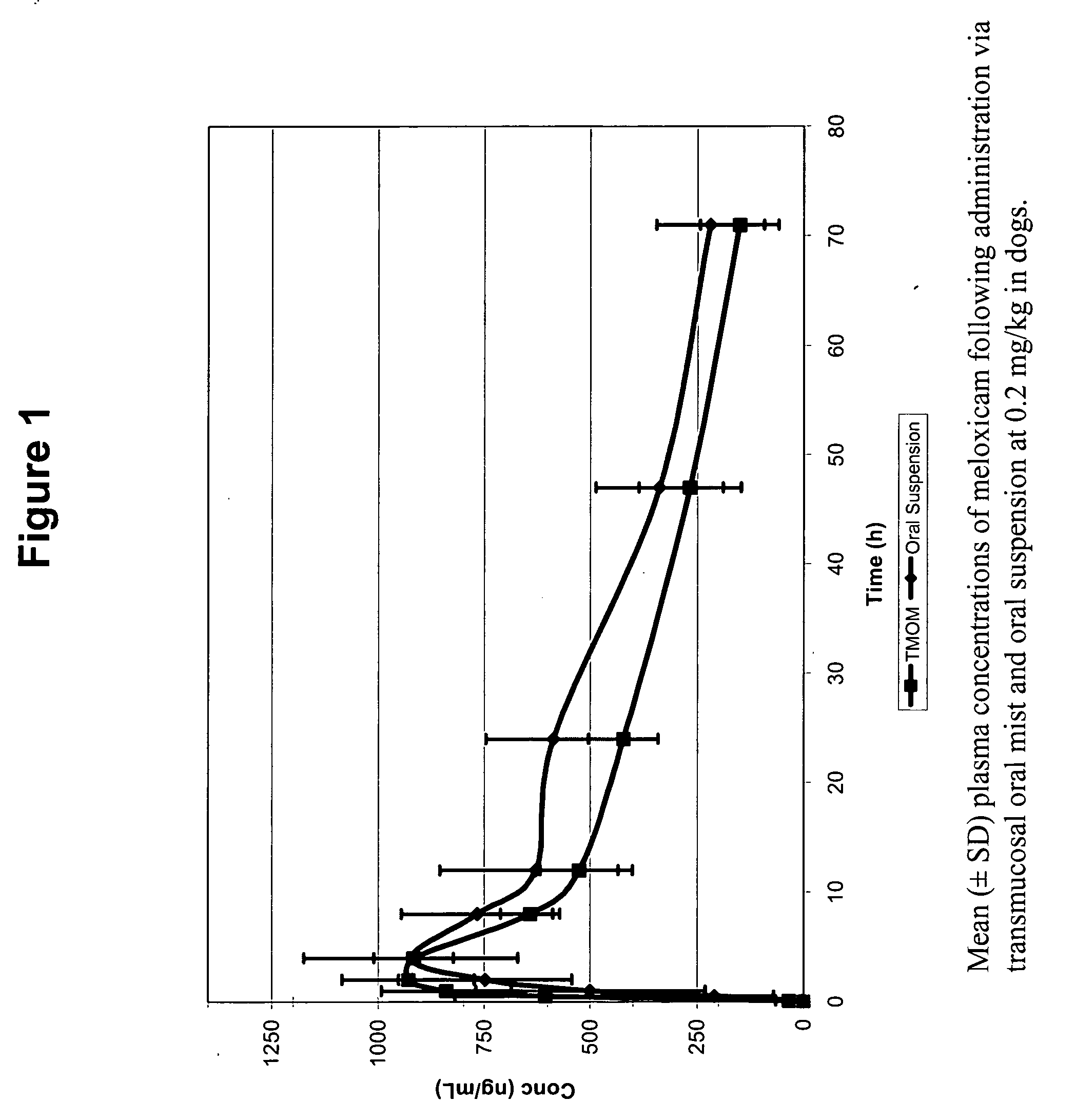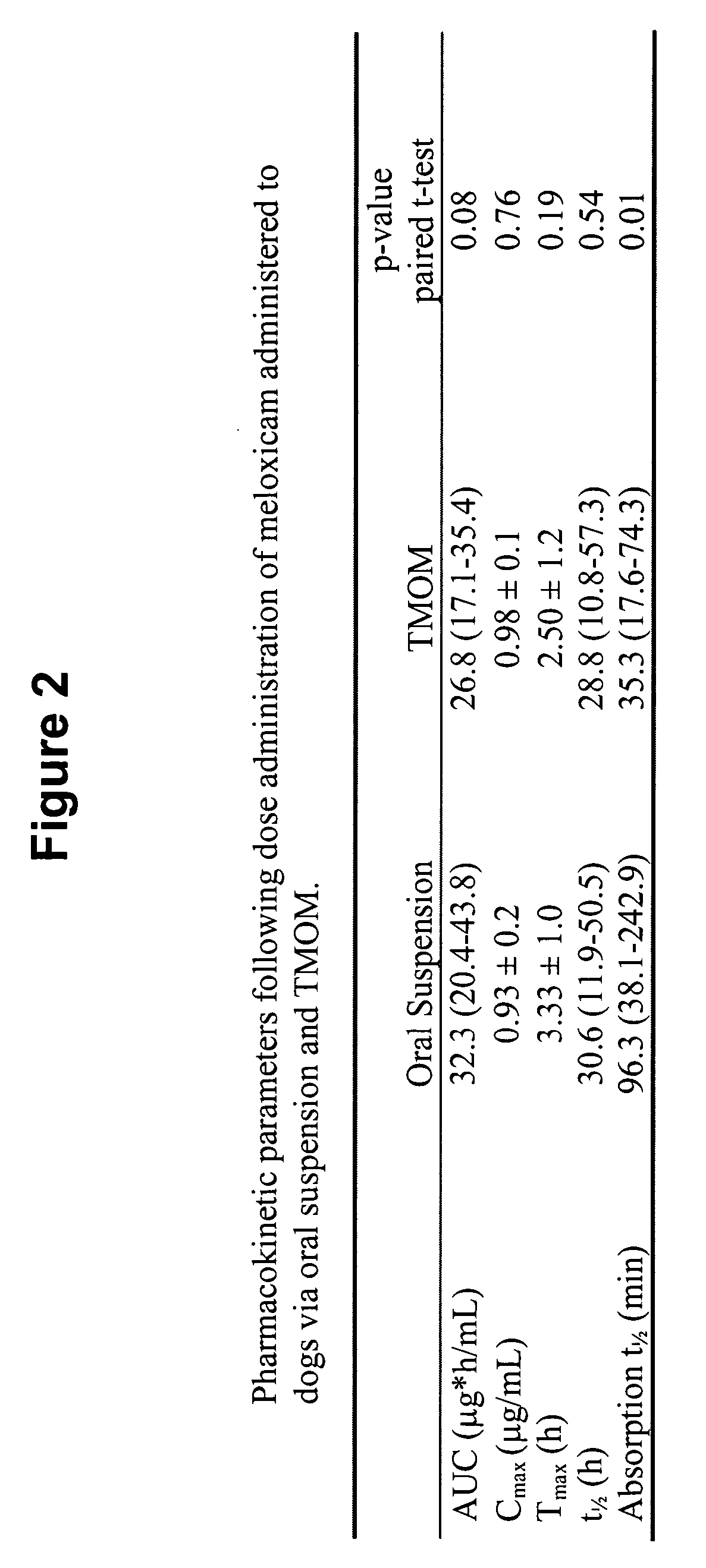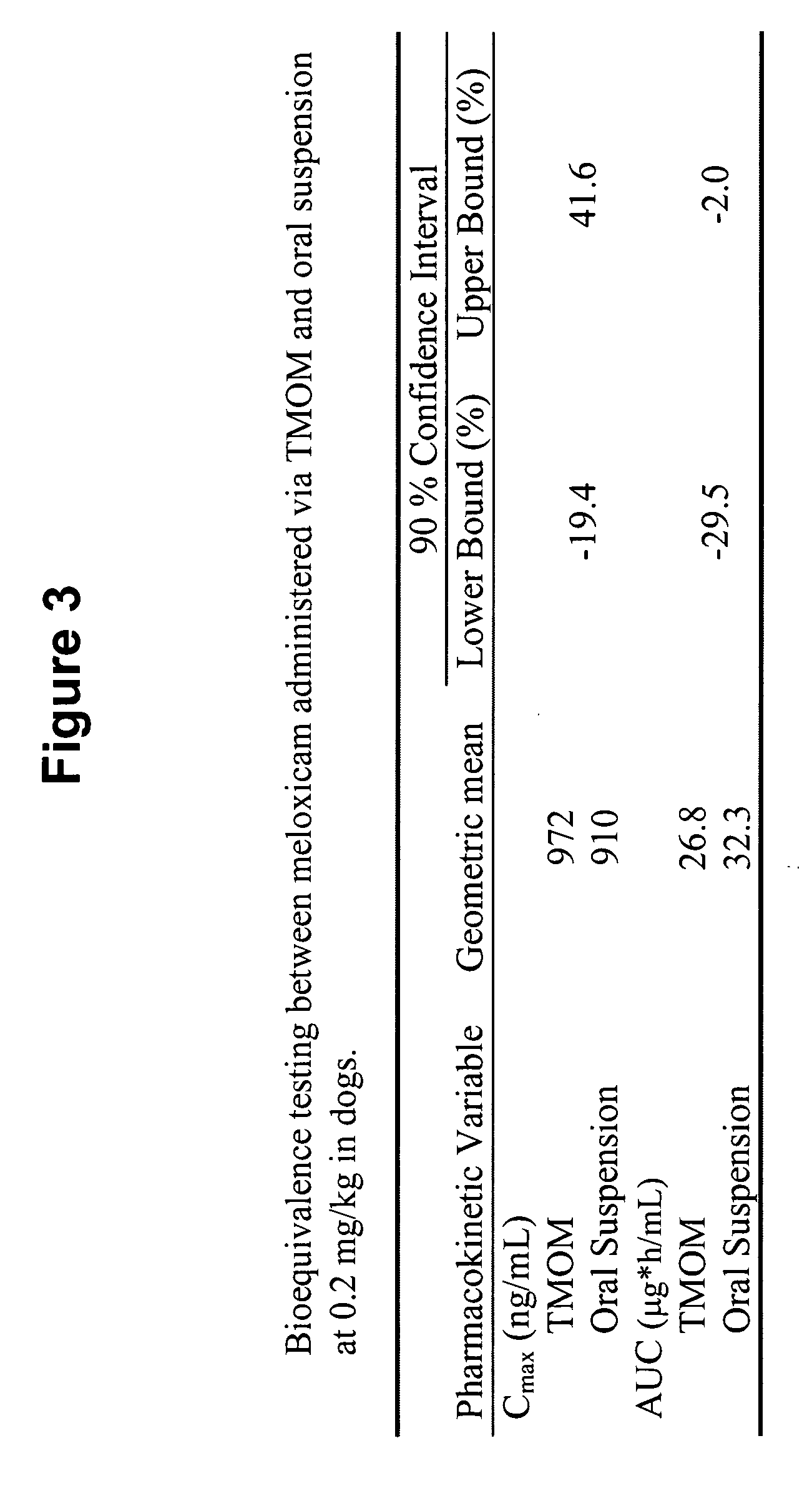Transmucosal administration of drug compositions for treating and preventing disorders in animals
a technology of pharmaceutical compositions and transmucosal injection, which is applied in the direction of depsipeptides, peptide/protein ingredients, and aerosol delivery, etc., can solve the problems of severe limitation of the utility of clemastine for veterinary applications, doses which are effective in humans are found to be ineffective in canine and equine subjects, and unpredictable effect of human drug effectiveness in non-human animals
- Summary
- Abstract
- Description
- Claims
- Application Information
AI Technical Summary
Benefits of technology
Problems solved by technology
Method used
Image
Examples
example 1
Meloxicam Formulations
[0241] An example of a composition according to the invention is shown below in Table 1:
TABLE 1Illustrative Meloxicam CompositionIngredientsAmount (mg / g)Meloxicam, BP4.67Boric Acid, NF0.77Potassium Chloride, USP0.93Polyvinyl alcohol, USP5.00Ethyl alcohol, dehydrated, USP150.00Sodium hydroxide, NF / FCC1.08Purified water, USP837.57
[0242] The formulation of Table 1 has a pH of approximately 8.4, and may be prepared by the following method:
Preparation of 0.93% Meloxicam Stock Solution
[0243] In a 250 mL media bottle, meloxicam, BP (0.93 g) in 94.00 g of purified water, USP and 4.95 g of 1 M sodium hydroxide solution. After the meloxicam completely dissolves, the pH should be approximately 11.5. if no pH adjustment is needed, additional purified water is added to adjust the total solution weight to 100 g. If the pH is not within the range of 11.5±0.2, then 1 M sodium hydroxide is added to adjust the pH to a value within this range, and additional purified water i...
example 2
Canine Meloxicam Absorption Study
[0266] A six dog, two-way crossover experiment comparing conventional oral administration of meloxicam (i.e., Metacam® oral suspension) with transmucosal oral administration (i.e., commercially available Metacam® injectable solution applied via transmucosal oral spray) of meloxicam was performed. The target dose was 0.2 mg / kg of meloxicam. The average oral suspension dose was 0.20 mg / kg (range 0.19-0.21 mg / kg), and the average dose using transmucosal oral administration was 0.20 mg / kg (range 0.19-0.21 mg / kg). Blood samples were obtained at 0, 5, 30 minutes and 1, 2, 4, 8, 12, 24, 48, and 72 hours post dose.
[0267]FIG. 1 shows that, following administration of the meloxicam using TMOM™, the absorption time, peak plasma concentration, and total absorption are comparable or better relative to the delivery profile obtained with the oral suspension. Thus, TMOM™ provides a simpler administration method which delivers meloxicam as effectively as convention...
example 3
Canine Anesthetized Meloxicam Absorption Study
[0270] A canine anesthetized absorption study was also carried out. The subjects were anesthetized dogs using minimal pre-anesthetics (isoflurane via an endotracheal tube). The possibility of run off into and absorption by the gastrointestinal tract was prevented by obstructing the esophagus with a Foley catheter. The meloxicam was administered using a transmucosal oral mist, and after 30 minutes, the dogs' mouths were washed to remove any residual oral mist formulation. Blood samples were taken 0, 5, 30 min, and 1, 2, 4, 8, 12, 24, and 72 hours post-dose. Jugular and cephalic vein samples were obtained 5, 30 min and 4, 8 hours post-dose. The target dosage was 0.1 mg / kg (4.66 mg / mL meloxicam in 15% ethanol, 0.5% polyvinyl alcohol, pH adjusted to 8.5, 200 μL (0.09 mg), dose range 0.08-0.15 mg / kg). The results are shown in FIGS. 4 and 5.
[0271] Transmucosal delivery of meloxicam was clearly confirmed. FIG. 4 shows that absorption of melox...
PUM
| Property | Measurement | Unit |
|---|---|---|
| Percent by mass | aaaaa | aaaaa |
| Percent by mass | aaaaa | aaaaa |
| Percent by mass | aaaaa | aaaaa |
Abstract
Description
Claims
Application Information
 Login to View More
Login to View More - R&D
- Intellectual Property
- Life Sciences
- Materials
- Tech Scout
- Unparalleled Data Quality
- Higher Quality Content
- 60% Fewer Hallucinations
Browse by: Latest US Patents, China's latest patents, Technical Efficacy Thesaurus, Application Domain, Technology Topic, Popular Technical Reports.
© 2025 PatSnap. All rights reserved.Legal|Privacy policy|Modern Slavery Act Transparency Statement|Sitemap|About US| Contact US: help@patsnap.com



